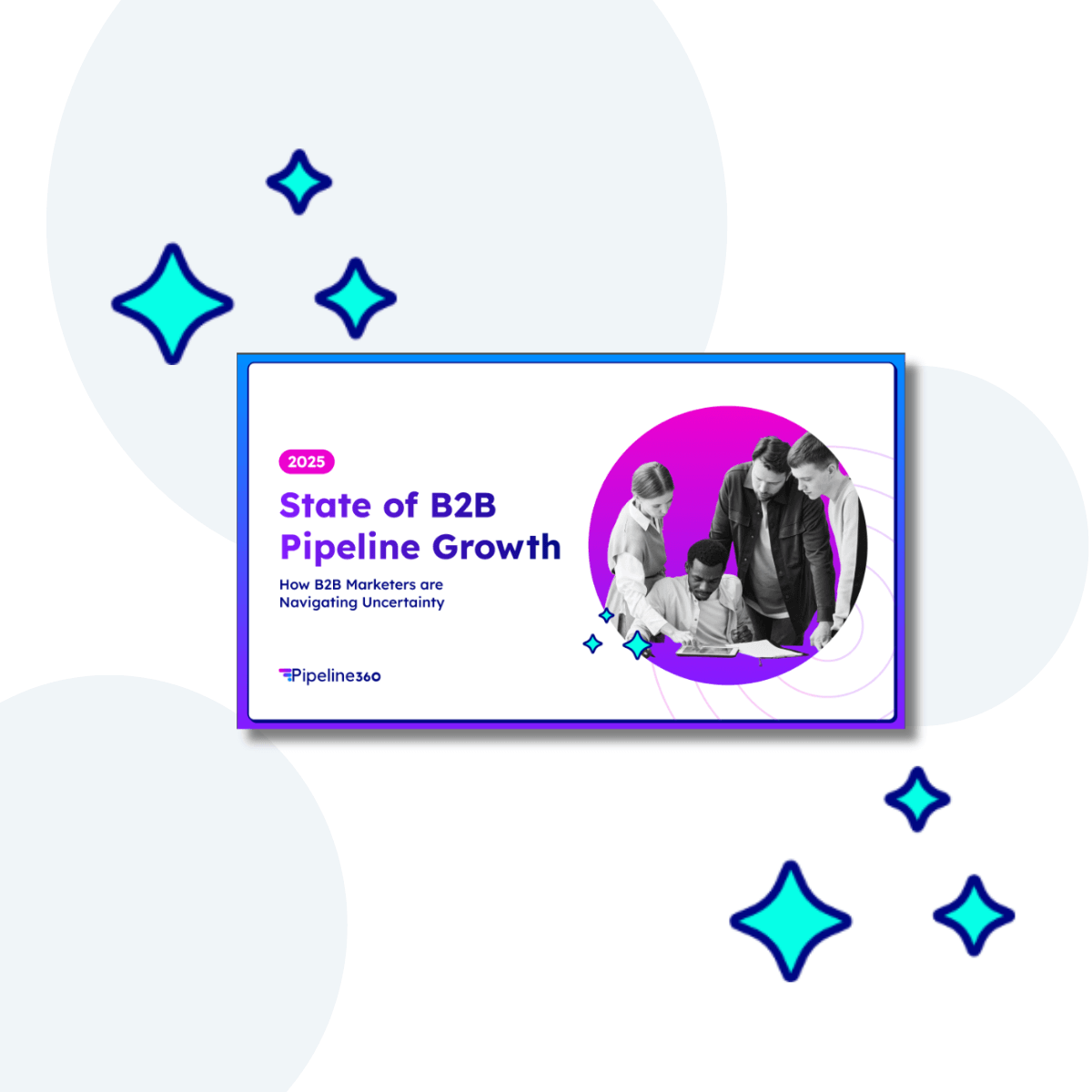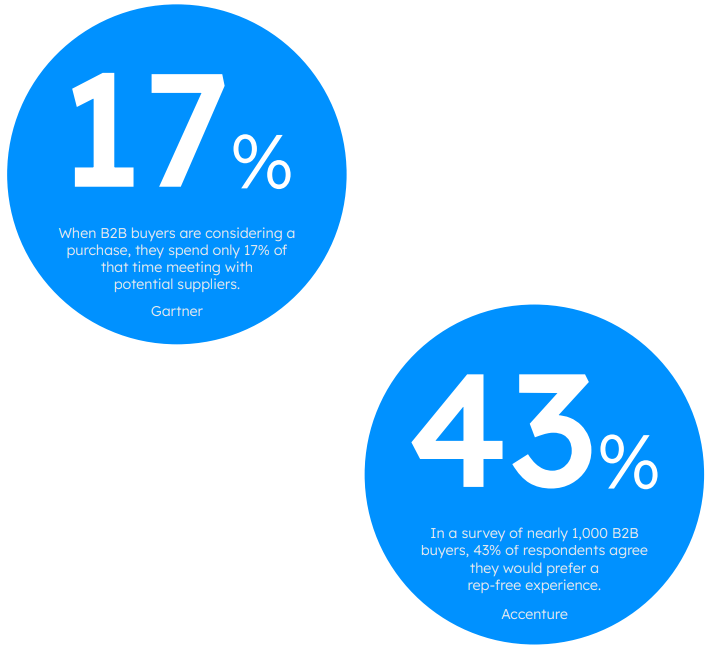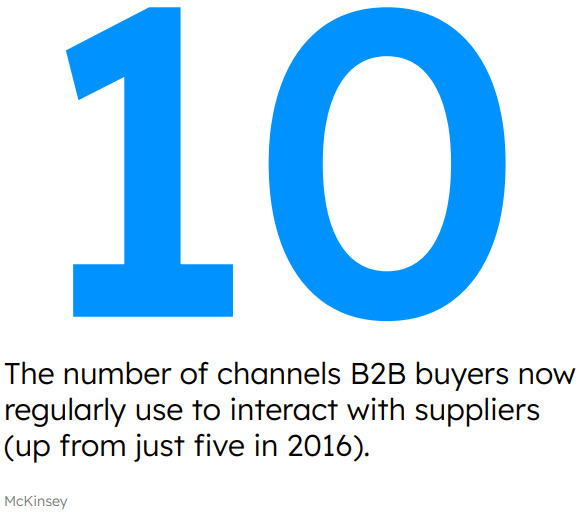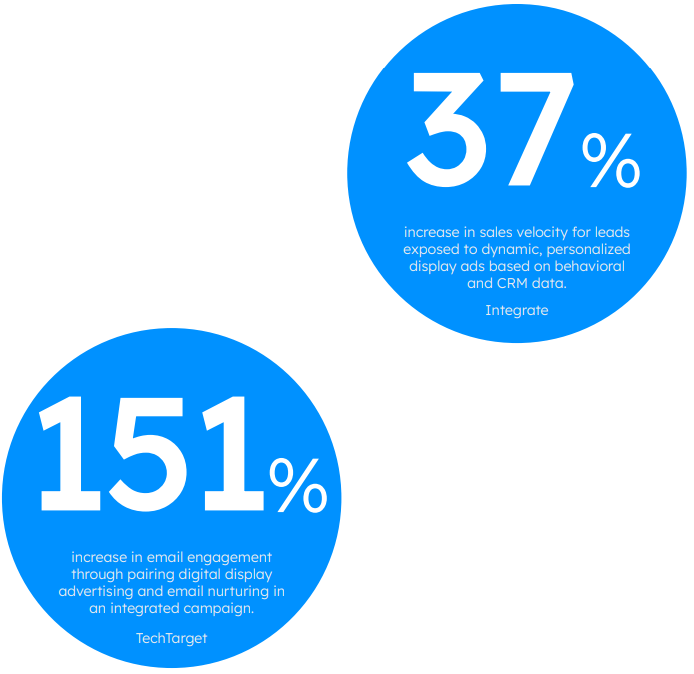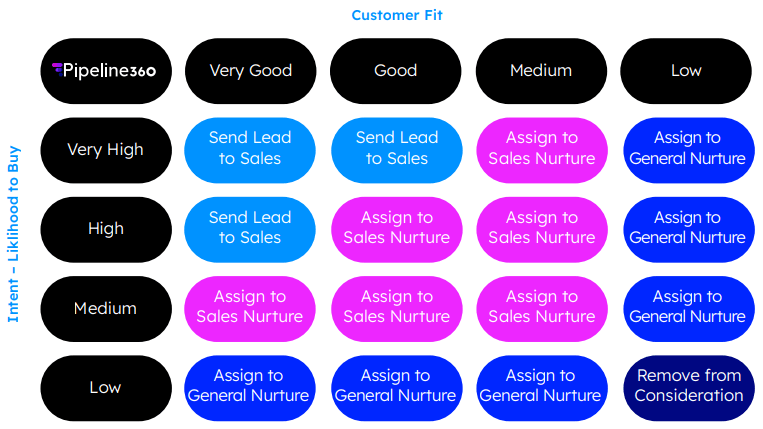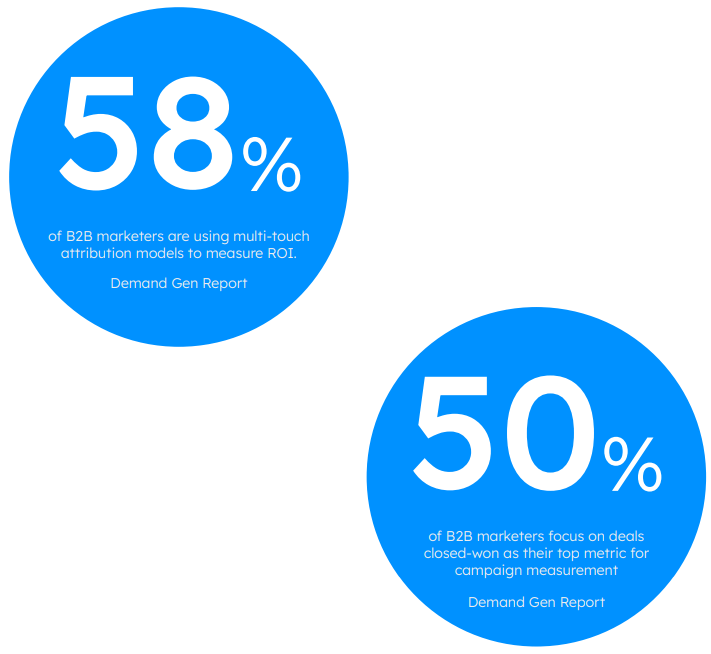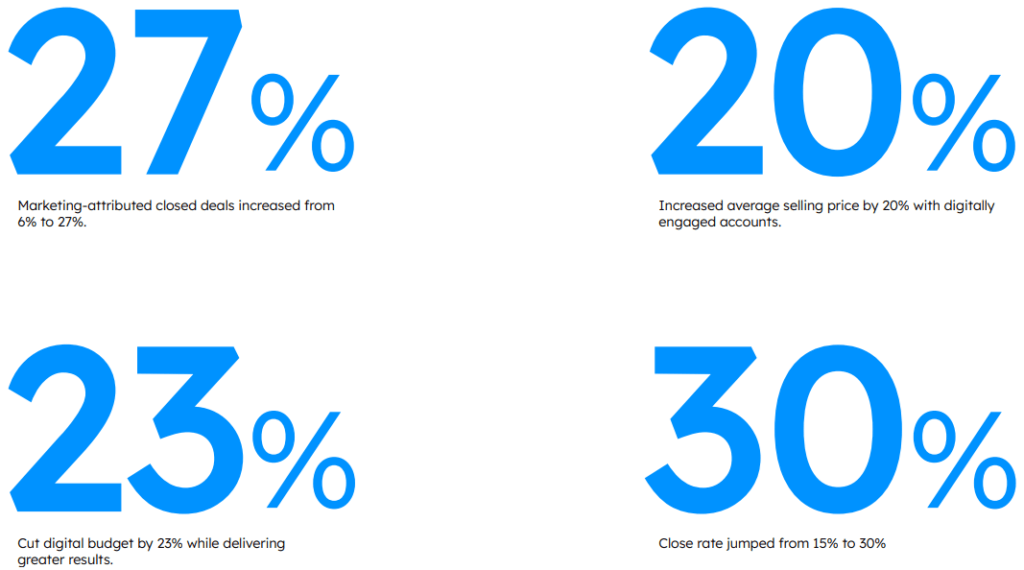Content syndication is a marketing multitool
Filling the need for leads
At any given moment, only 5% of B2B buyers are in-market and ready to buy your product, according to research by LinkedIn and the Ehrenberg-Bass Institute for Marketing Science. That means marketers need to be making connections with potential customers long before they’re ready to buy — when they’re looking for information and doing general research about a problem they need to solve.
Content syndication can help you reach that all-important 95% by surfacing your content while customers are conducting their research. It’s also a versatile tactic that can support efforts throughout the marketing lifecycle. This guide explores why you should still use content syndication in your marketing efforts and provides guidance on selecting vendors.
What is content syndication?
Content syndication is republishing a piece of content in relevant industry media beyond your company’s own website or blog. Syndicating your content allows it to reach audiences you would not otherwise have access to. Most businesses dedicate 25% or more of their marketing budgets to developing content; content syndication helps you get the most out of that investment.
How content syndication can help your business:
- Predictable pipeline: Content syndication provides a reliable pipeline of leads matching your ideal customer profile (ICP) at target accounts, at a pre-set cost per lead, so you can count on meeting your quarterly lead goals.
- Increased visibility: 68% of B2B buyers start gathering information via search engines and portals. Placing your content on more and higher-traffic sites makes it more likely to come up in searches.
- Credibility: Having your content featured on well-respected websites can raise your brand’s profile as an authoritative source. Redefine content marketing. Content can no longer only support your top-of-funnel needs. You need to create content to support the entire customer lifecycle: acquisition, retention, and expansion.
Benefits: Syndicating your content provides a reliable stream of leads matching your ICP.
88%
of business buyers say online content has played a major or moderate role in their vendor selections
CMO Council
Optimize content for buyers’ research process
Understanding the B2B buyer’s journey
B2B buyers go through a long decision-making process before making purchases. The early stages of the buyer’s journey offer the best opportunities for the marketer to develop a connection that can lead to acquiring them as a customer. The stages of the buyer’s journey are:
- Discover: becoming aware of a problem or opportunity and looking for information to understand it fully.
- Evaluate: further researching the problem or opportunity to understand its impact and the potential benefits of taking action to address or explore it.
- Convert: selecting specific options to help solve the problem or capitalize on the opportunity.
Buyers are receptive to informative content
B2B buyers are especially receptive to receiving relevant information from vendors during the Discover and Evaluate stages. According to Gartner research, B2B buyers who perceive the information they get from suppliers as helpful are 2.8 times more likely to experience a high degree of purchase ease, and three times more likely to buy a bigger deal with less regret.
Many buyers start their research on third-party websites. Syndication places your content in front of buyers who are early in their research process. Optimize your syndicated content by making sure it is informative and educational, rather than sales oriented. Provide clear information about the problem, including the hazards of leaving it unresolved. If the subject is an opportunity, explain the potential benefits of pursuing the opportunity.
Benefit: Syndicating your content provides a reliable stream of leads matching your ICP.
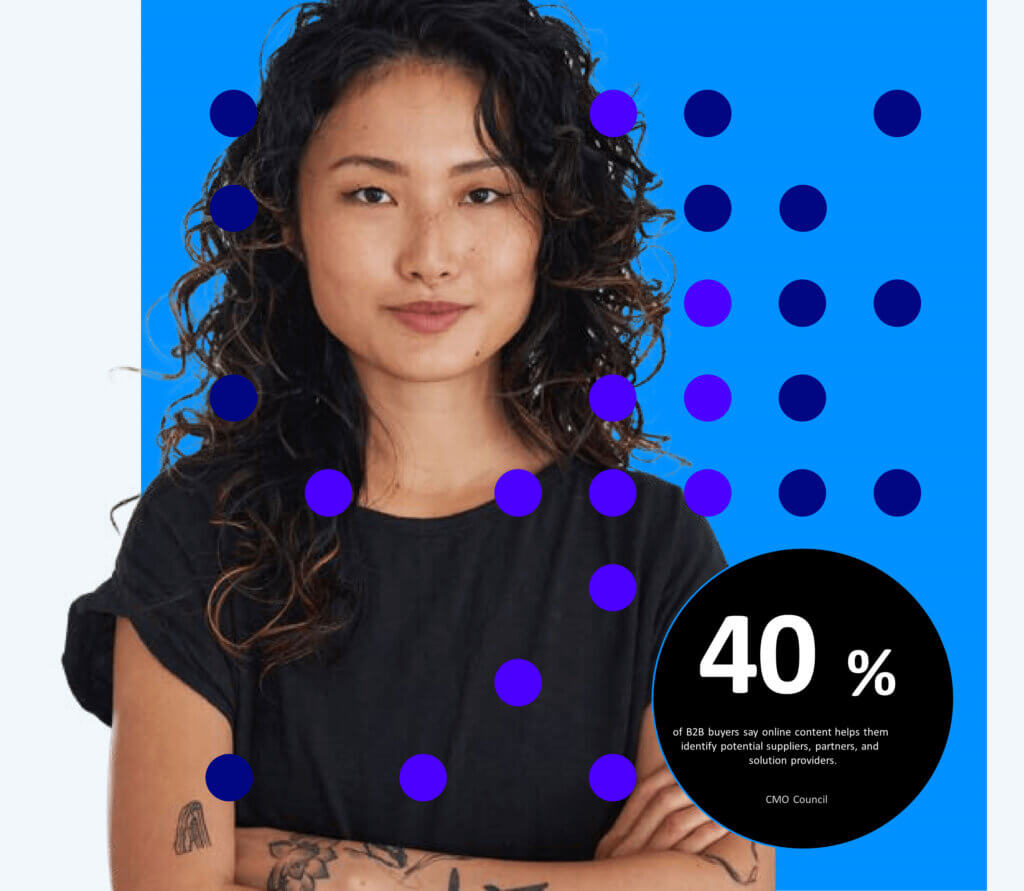
Broaden your reach and target specific accounts
When to use content syndication
Content syndication can target a specific set of named accounts or apply broader audience criteria. In either case, content syndication delivers a reliable stream of ICP leads, which complements the (sometimes inconsistent) performance of inbound and paid advertising tactics, adding predictability to your pipeline.
How content syndication supports the revenue funnel
A typical revenue funnel can be defined in five stages. (Note that every company has its own version of a revenue funnel.)
- Inquiry: the first contact from a potential buyer.
- Marketing Qualified Lead (MQL): a lead that has interacted with marketing messages and is ready for sales contacts.
- Sales Accepted Lead (SAL): a lead that has been qualified by sales development representatives (SDRs) or business development representatives (BDRs).
- Opportunity: a potential sale from an account linked to sales-accepted leads.
- Revenue: a sale resulting from an opportunity.
Content syndication is highly effective at generating ICP top-of-funnel inquiries. It boosts the performance of your entire revenue funnel when used as part of a comprehensive strategy that nurtures inquiries into MQLs through integrated marketing programs.
“Content syndication leads may not be as bottom-of-funnel as a phone call or website outreach, [but] they are an effective and cost-efficient way to fill the pipeline.” — Shelly B., Demand Gen Leader
Benefit: Content syndication has the versatility to reach broad audiences and target specific groups of buyers.
Iron Mountain increased content syndication sourced inquiry to MQL conversion rates from
6 to 22%
and influenced nearly $22 million in pipeline through optimization of their content syndication programs.
Integrate
Integrating content syndication into your strategy
How content syndication fits into your marketing mix
Content syndication is most effective when used as part of an integrated marketing plan that includes inbound and outbound, digital, brand, product, and event activities. Syndicated content should fit seamlessly into the buyer’s research process by providing useful information that helps them understand a problem or opportunity that’s relevant to their business. Think of your content as a resource — the more helpful it is, the better your chances of developing that contact into a customer.
“Content syndication begins the customer journey as a library that’s fully available for ‘self-education’ . . . [A] skilled marketer can help shape that journey by leveraging early interest into strategic demand gen.” — Bret Smith, CEO, HIPB2B
Using content marketing to support other strategies
Content syndication can support a variety of marketing efforts, including:
- Outbound/traditional demand marketing: Use content syndication to generate inquiries from prospects. You can target by persona, geography, company size, and industry, or any combination of factors.
- Account-Based Marketing (ABM): Content syndication can support ABM by helping you engage with specific buyers, a small group, or a large list of accounts.
- Inbound/always-on marketing: Use content syndication to develop a reliable stream of high-quality leads to support inbound efforts.
- Cross-channel/multichannel: Content syndication can help you identify inmarket accounts to target with tactics such as digital display ads, as part of your multichannel marketing strategy.
Benefit: Content syndication can support efforts throughout the marketing lifecycle.

Selecting content for syndication
What types of content are best for syndication?
Content for use in syndication should be informational in tone, educating readers about a topic or problem and supporting the key points with data or quotes from analysts or experts. Effective types of content for syndication include guide, whitepapers, reports by third-party analysts, infographics, and on-demand webinars.
How much content do you need for syndication?
In general, the more leads you want to generate, the more content you’ll need. To avoid audience fatigue — which can lower engagement and hurt your conversion rates.
Suggested content assets by lead goals
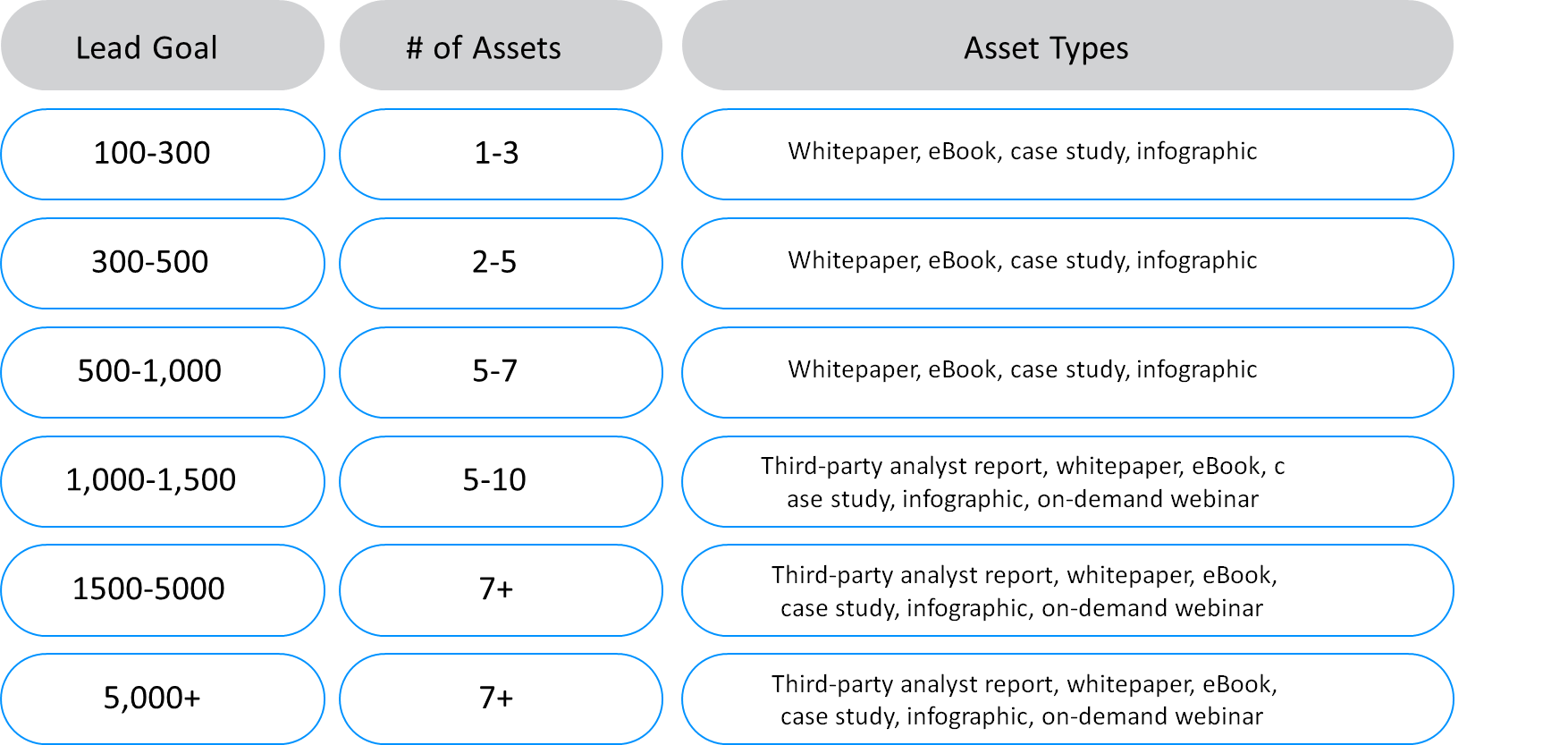
Types of content valued most by business buyers
- 65% Research reports and studies
- 50% Technical spec sheets and data sheets
- 46% Analyst intelligence and insights
- 35% White papers
- 30% Articles on trade publishing sites
Buyers consider third-party research, analyst reports, and editorial coverage to be the most trustworthy content sources.
CMO Council
Choosing the right syndication partners for your business
Types of syndication providers
Content syndication providers use a variety of terms to describe their services: publisher, media partner, database provider, etc. The most meaningful distinction is whether they’re a single-stream source or a marketplace source.
Single-stream source: offers access to an audience from one media brand
Advantages:
- Efficient for working with integrated marketing programs within the same media.
- Appropriate for smaller lead goals.
Disadvantages:
- May not be able to deliver a larger pipeline of leads.
Marketplace source: offers access to a network of single-stream sources
Advantages:
- Offers greater reach and precision than single-stream — you can access multiple sources or target a specific audience without reducing quantity or flow of leads.
Disadvantages:
- Due to contractual agreements, may not be able to disclose the specific vendors syndicating your content.
10 questions to ask potential vendors
- Which channels do they use to present your content?
- How will your content look: e.g., will it appear on its own landing page with your logo?
- What is the primary source of their audience?
- What are their targeting capabilities: e.g., geography, industry, company size, job title?
- Do they have a minimum campaign size?
- How are leads delivered: real-time injection into your systems or files for manual upload?
- Is lead data governed before you receive it?
- Do they guarantee that leads will match your ICP?
- What options do they offer for testing and in-flight adjustments?
- Which types of reporting do they provide?
Benefit: Choosing the right syndication provider will give you the reach and precision you need.
Getting the most out of your syndication efforts
Evaluate your content syndication performance
Once you’ve chosen a content syndication provider (or providers), it’s important to monitor their performance on key metrics to make sure they’re delivering the leads you need to meet your goals. If you’re working with multiple vendors, this also allows you to adjust your spending to make sure you’re getting the best possible ROI. Below are
key factors to consider:
Lead Quality: Poor-quality leads can affect your entire marketing and sales program and expose your business to regulatory risk. Make sure your leads:
- Include complete and accurate information, with no duplicate leads.
- Comply with all privacy regulations.
- Meet all your target criteria, e.g., job title, location, specific accounts.
- Are standardized according to your formatting requirements.
Lead volume and pacing: Are your providers delivering the quantity of leads you need at the cost you agreed on? Is the provider delivering leads to you at the pace that you requested?
Service: Is the provider easy to work with? Do they offer expertise and insights that help you optimize your content syndication program?
Benefit: Evaluate your content syndication partner’s performance to make sure you get the most of your investment.

Commvault uses content syndication in combination with digital display advertising to increase deal size and revenue
- 27% Marketing-attributed closed deals increased from 6% to 27%.
- 23% Cut digital budget by 23% while delivering greater results.
- 20% Increased average selling price by 20% with digitally engaged accounts.
- 30% Close rate jumped from 15% to 30%.
